Table of Contents
Quiet quitting, also known as silent resignation, is a growing problem in many organizations.
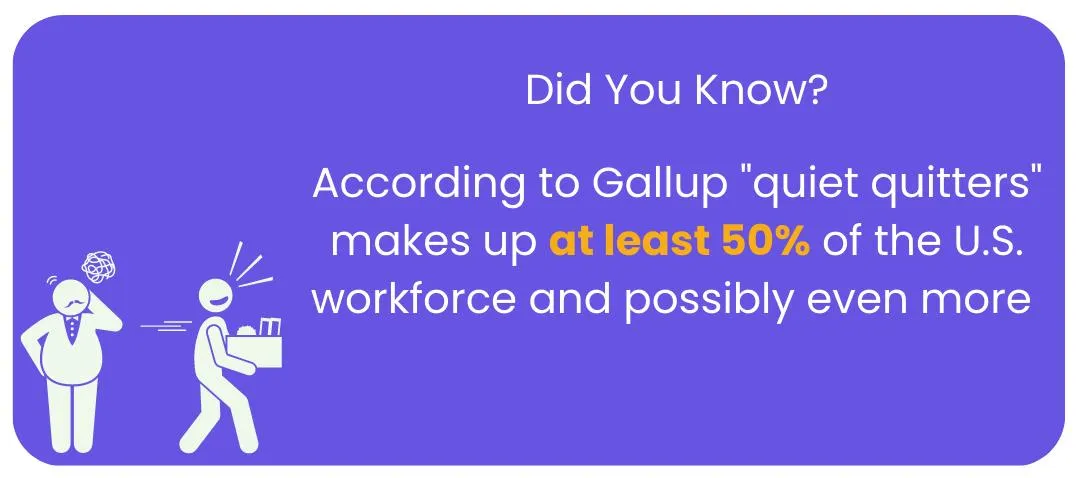
Quiet quitting is when employees become dissatisfied with their job, disengage from their work, and eventually leave without indicating their intentions.
As a result, the organization may experience a decline in productivity, increased recruitment costs, and loss of talent.

Addressing quiet quitting requires a proactive approach that empowers the organization to detect early signs of disengagement and take corrective action.
In this blog post, we will explore the different ways organizations can empower themselves to address quiet quitting and create a more engaged work environment.
Let’s get started by first taking a look at some of:
The Common Reasons For Quiet Quitting
1) Poor workflow management- Poor management of the workflow can result in a lack of employee engagement and lead to quiet quitting due to:
- Shift mismanagement
- Inaccurate work hours tracking
- Lack of communication
2) Lack of transparency-If employees don’t know what is expected of them and how their work fits into the bigger picture, they may feel inclined to change their jobs or leave without any notice
3) Unclear job assignment – If employees are not given clear guidance and direction on:
- What do their roles and responsibilities entail
- What is their daily schedule
- How many working hours are expected to be completed
This leads to a lack of clarity and a sense of purpose resulting in quiet quitting.
4) Poor feedback & recognition- When employees feel they are not being given proper feedback and recognition as per their:
- Productivity rate
- The total project worked on
- Performance trends
They may feel unguided and unsupported, leading to a lack of motivation and eventually quiet quitting.
Now that we know the common reasons for quiet quitting,
Let’s explore:
How To Reduce Employee Turnover: Finding Solutions To Common Challenges
Challenge 1 – Lack Of Insights For An Indication- Organizations struggle to find enough indications that an employee is planning on leaving, making it difficult to confront the problem on time to retain them and understand why they are leaving.
Solution 1: To address this challenge, organizations can implement workforce management software to track employee behavior and identify employee disengagement patterns.
This can include
- Tracking absenteeism
- Low productivity trend
- Activity rate
![]()
This timely identification of potential problems allows the organization to address them before losing their valuable employee.
Challenge 2- Difficult To Track Employee Activity– Organizations often lack the visibility to track employee activity on their system, making it difficult to identify any potential red flags, such as:
- Visiting other companies’ websites for a new job
- Using apps like LinkedIn to find a new job
Solution 2: Organizations can use employee monitoring software that can track employees’ online activity, including the:
- Websites they visited
- The applications they used
- The time spent on each task
![]()
With a real-time screenshot, employers can monitor employees’ work and detect any suspicious activity, such as:
- Excessive use of job search websites
- Communication with competitors
- Using company resources for personal projects
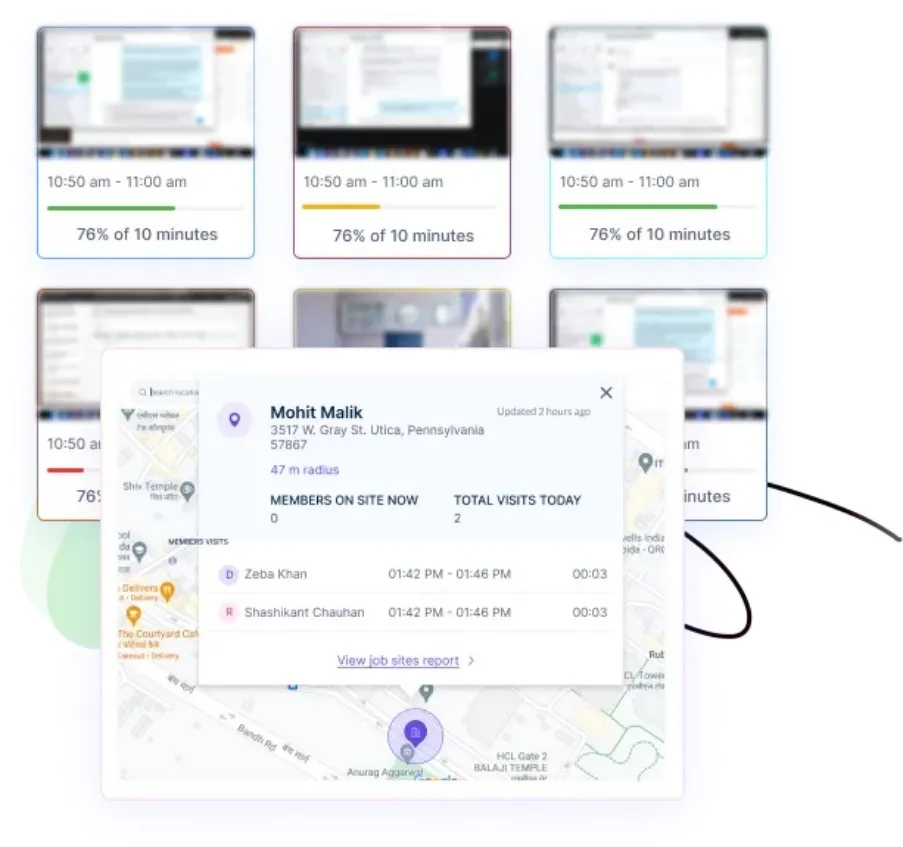
Making it easier to identify potential red flags and address them before it’s too late
Challenge 3- Unclear Performance Expectations- Employees may feel unclear or uncertain about expectations from their job, such as
- Assigned shifts
- Expected productivity levels
- Total work hours of the day
- Accountability
This can lead to a lack of clarity and engagement with their job, making them more likely to look elsewhere for better opportunities.
Solution 3- Investing in automated tools and mediums with a central dashboard that can
- Track employee performance
- Hours spent on tasks
- Displays the expected performance metrics
This provides employees with a better understanding of what is expected from them, boosting their morale and lowering their chances of leaving the company.
Challenge 4 – Lack of Recognition & Appreciation- Employees want to feel valued and appreciated for their contributions.
If they feel like their hard work is going unnoticed or unappreciated, it can lead to disengagement and a desire to find a workplace where their efforts are recognized and rewarded.
Solution 4- AI-powered reports can help managers to analyze employee performance and provide measurable goals that can be tracked daily, such as:
- Timesheet reports for time spent on a task
- Projects and To Do’s reports for no.of tasks completed in the day
- Time & Activity report for productivity improvements
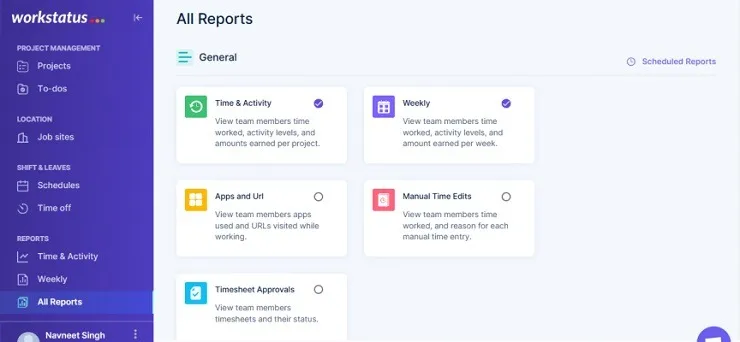
Based on these reports, managers can provide timely and specific feedback to employees and recognize their efforts leading to:
- Fostering a culture of appreciation
- Better recognition
- Trust in the workplace
As we are now familiar with some common reasons for quiet quitting and ways to address them,
Let’s explore:
Addressing Quiet Quitting: The Key Benefits
Addressing quiet quitting is important to an employer because it delivers various benefits to the workplace. Some of those benefits are as follows:
1) Increased Retention:
When employers address quiet quitting, they can retain valued employees by addressing their issues and finding ways to resolve them.
This ensures that experienced workers are retained and that their expertise for the workplace is not lost.
2) Improved Employee Engagement:
Addressing quiet quitting also helps to improve employee engagement.
By addressing issues that employees feel are not being heard, employers can create an environment where employees feel valued, and their opinions matter.
This increased engagement leads to improved productivity and a positive working environment.
3) Better Understanding Of Workplace Issues:
Identifying and addressing quiet quitting helps employers to better understand what is causing employees to be dissatisfied or disengaged.
This understanding can lead to improvements in job management practices and workplace culture.
4) Enhanced Reputation:
The fact that employers take the time to identify and address quiet quitting can enhance their reputation with current and potential employees.
A workplace that is perceived as caring, responsive, and open to feedback will attract better talent.
5) Improved Morale:
By addressing the issues that lead to quiet quitting, employees will feel more supported and valued.
This leads to improved morale which can positively impact employee performance and productivity.
With such benefits, it is clear why addressing quiet quitting should be a priority for employers for a successful and healthy workplace.
Next step
Quiet quitting is a growing problem in many organizations that can have significant negative consequences.
However, by taking a proactive approach and implementing solutions such as Workstatus, the workforce management software, organizations can avoid the pitfalls of quiet quitting and create a more positive work environment.
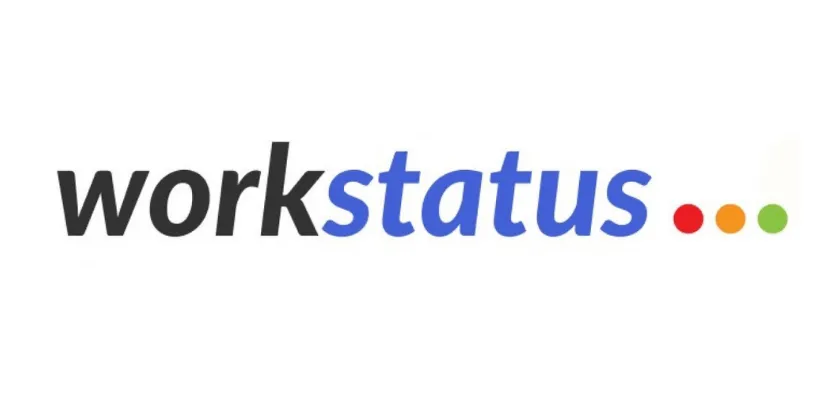
Workstatus is designed to make it easier for managers to monitor employee engagement levels, identify potential issues early on, and take corrective action before an employee quits without notice.
Some of the best features that make Workstatus an effective tool for addressing quiet quitting are:
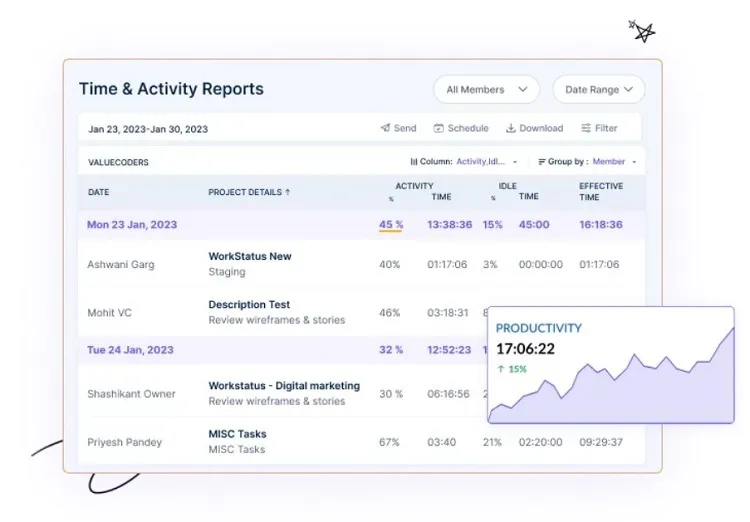
3) Employee Activity Monitoring
![]()
4) Active Screenshot Capture
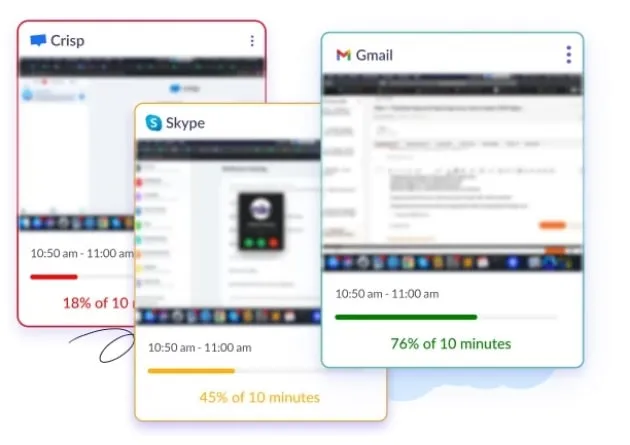
6) GPS Tracking
![]()
7) Geofencing
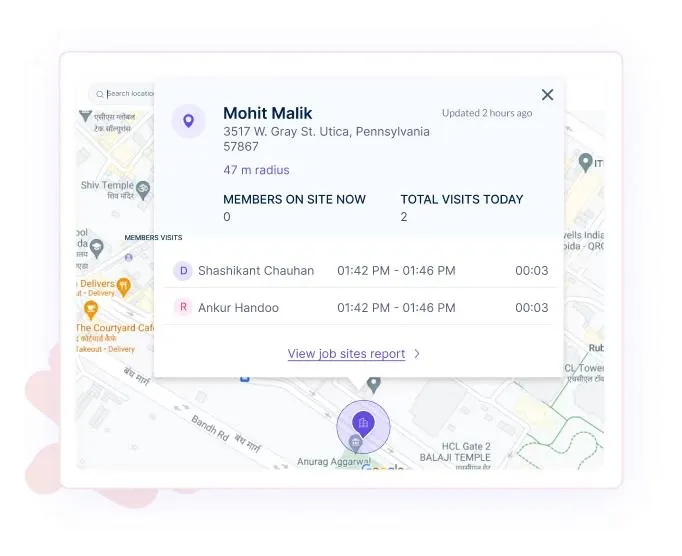
8) Selfie Validation
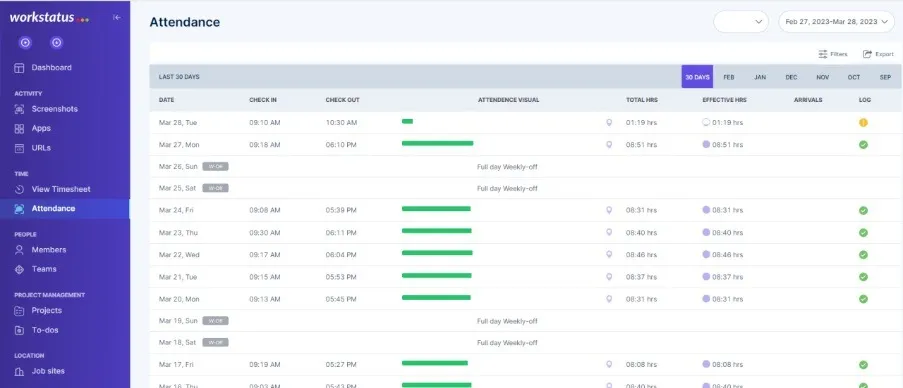
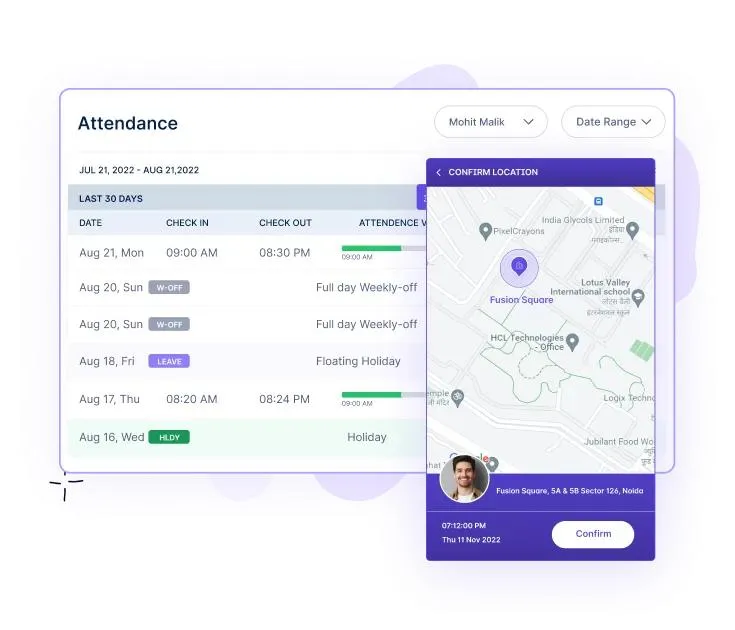
10) Central Dashboard
So what are you waiting for?
Start using Workstatus today and make sure your organization never has to suffer the consequences of quiet quitting again!
That’s all for today.
Thanks for reading!
FAQs
How do you know if an employee is quitting?
If an employee quits quietly, they may withdraw from their role.
This could include decreased engagement, low-performance rate, and a lack of enthusiasm for their work.
They may also start to take longer breaks, arrive late to work, or have more absences than usual.
If you notice any of these signs, it’s important to have a conversation with the employee to check in and see if you can do anything to help resolve the situation.
What are tips for dealing with quiet quitting?
Here are some tips for dealing with quiet quitting:
- Communicate regularly with your employees: Regular check-ins and open lines of communication can help identify any issues contributing to an employee’s decision to quit.
- Provide support: Offer resources and support, such as training programs or flexible schedules, to help employees overcome any challenges they may face in the workplace.
- Address concerns and complaints: Actively listen to employee concerns or complaints, and take steps to address and resolve any issues contributing to their desire to quit.
- Foster a positive work environment: Create a positive environment that fosters collaboration, respect, and open communication. Encourage employees to share their opinions and feedback and make them feel heard.
Remember, the goal is to create an environment that encourages employees to stay with your organization longer and contribute towards success.












